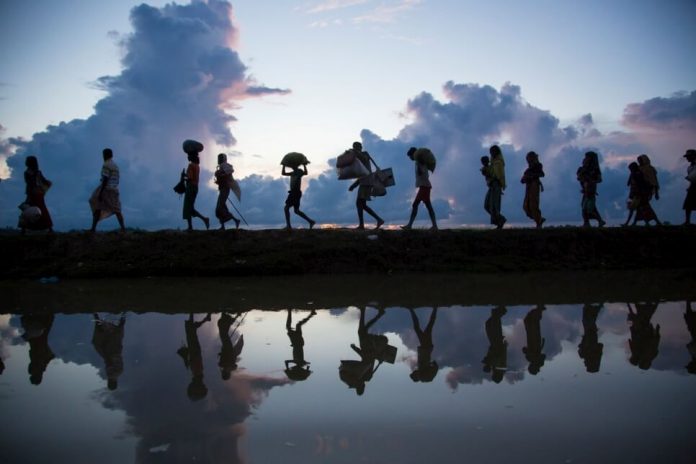INTRODUCTION
Indian population has one of the world’s biggest refugees. Regardless of the fact that India assists the different groups of refugees, the government has no special internal legislation or policies for refugees – Syrian, Afghan, Palestinian, Persian, Ethiopian and Christian refugees, etc. A refugee shall be referred to in the UN Convention 1951 on the Status of Refugees (Refugee Convention) as a “a person who is outside the country of her nationality and is unable or unable to take advantage, because of a well-founded fear that they will be persecuted for reasons of race, religion, nationality, membership of a social group or of political opinion.”
Although India is not a Party to Protocol of 1967 or the 1951 Refugee Convention, it does not even have a National Refugee Protection Framework, it it offers shelter for refugees from neighbouring countries. The refugee status of asylum seekers is granted by UNHCR unless the Indian government protects the status. In accordance with India’s law the phrase “foreigner,” which puts refugees, immigrants and tourists in the same broad category, is the sole reference to aliens of any type.
WHO IS REFUGEE IN INDIA?
The new bill exploits the word “migrant,” as set forth by 1951 and its 1967 additional protocol, to deny these refugees of their rights under international refugee law. This rule also breaches Article 14 of the Indian Constitution, which bans racial, religious, caste, belief, sex and place of birth discrimination and other basic freedoms, all of which are equally accessible to refugees, with appropriate limits. India still has to sign the international legislation on refugees based on the 1967 UN Convention on Refugees. While India complies with the key UN treaties, including the nine core treaties on human rights, the law or policy on refugee status is not uniform. For example, India provides full protection and aid to non-Muslim asylum seekers and refugees from Sri Lanka and Tibet, assisting them in obtaining documents that provide them with a variety of legal benefits. The UNHCR, on the other hand, provides relatively little help and assistance to refugees from Myanmar, Palestine, and Somalia. Although the Indian government does not formally recognize these refugees, it does allow the UNHCR to provide de facto protection to people who are not recognized under Indian law, such as Muslim refugees.
LEGAL ASPECT
Since its inception, India has been a constant host of refugees. According to the UN Refugee Agency, India was home to over 200,000 refugees as of 2014. People have arrived from all over the world, including Afghanistan, Bangladesh, and Myanmar, as well as Eritrea, Iran, and Iraq. Since 1959, India has welcomed Tibetan refugees, Bangladeshi refugees since 1971, Chakmas, a Buddhist ethnic group from the former East Pakistan, since 1963, and Sri Lankan refugees since 1983, 1989, and 1995 as a result of the civil conflict. Further waves of migration were motivated by the conflict in Afghanistan from the 1980s, as well as the instability in Myanmar in the 1990s. In India, the term “alien” is used to describe refugees. The term “alien” is used in the Indian Constitution (Article 22, paragraph 3 and Entry 17, List I, Schedule 7), the Indian Civil Procedure Code (Section 83), and Section 3(2)(b) of the Indian Citizenship Act, 1955, among other statutes. The Foreigners’ Law, which was adopted in 1946, authorises the Central Government to restrict foreigners’ entrance, presence and department from India. The 1939 Registration Act oversees registration of foreigners entering, residing or departing India. Moreover, the Passport Acts of 1920 and 1967 deal with the government’s capacity to enforce passport requirements in respect of its entry into India and to issue passports and travel permits to restrict the entry of persons from India.
THE ROLE OF JUDICIARY FOR THE PROTETION OF REFUGEE
There is always a risk of refoulment, repatriation, or deportation if any of the refugees are apprehended or apprehended by Indian authorities. Those refugees who are apprehended for illegally being in the country might be held indefinitely under administrative orders without being charged. The Foreigners Act gives the Central Government complete and unrestricted authority to deport foreigners from India. In “Hans Muller of Nurenburg v. Superintendent, Presidency,” the Supreme Court of India allowed the government “absolute and unfettered” power to exclude foreigners. In “Mr. Louis De Raedt & Ors v. Union of India,” the Supreme Court maintained the previous ruling. The Supreme Court also ruled that foreigner had the right to be heard in the same decision.
CONCLUSION
Various countries have enacted refugee laws based on internationally recognized principles to protect its refugees. The nations that have ratified the agreement have established a mechanism for identifying refugees and dealing with their protection concerns. Despite the fact that India has not ratified the treaty, it protects refugees. “However, there is still a lack of consistency in the method for selecting refugees.” There is no central body that works with refugees in India because there is no common code for defining refugee status. This is due to the government’s failure to pass a refugee statute. As a result, India must pass a refugee law in order to retain territorial integrity, secure porous borders, provide homeland security, evade foreign pressure in the name of refugee rights, and set high standards for international human rights respect. To treat refugees with dignity in India, either ratify the 1951 Convention and incorporate it into domestic law, or adopt consistent legislation expressly for refugees, so that their destiny is not decided at the executive and judicial discretion.
Article By: Paridhi Agrawal
REFRENCES
- https://theprint.in/opinion/why-india-is-home-to-millions-of-refugees-but-doesnt-have-a-policy-for-them/341301/
- https://blog.ipleaders.in/legal-status-refugees-india/
- https://www.fairobserver.com/region/central_south_asia/refugees-rights-india-south-asian-world-news-headlines-97021/
- https://www.lawteacher.net/free-law-essays/international-law/refugee-law-the-indian-perspective-law-essay.php
- Hans Muller Of Nurenburg vs Superintendent, Presidency, 1955 AIR 367
- Louis De Raedt & Ors v. Union of India, 1991 SCR (3) 149








